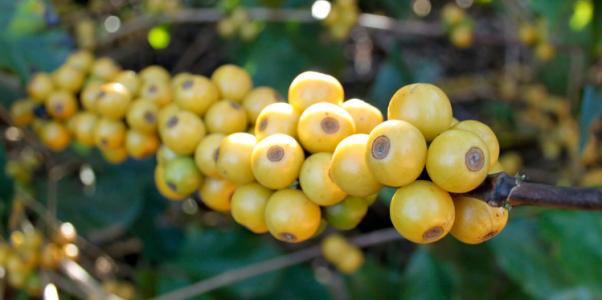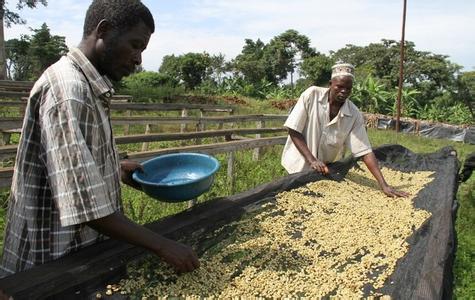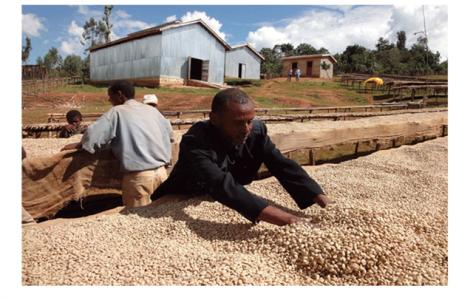A brief introduction to the Flavor description of the altitude producing area of Coffee beans in Tian Chi Manor, Nicaragua
A brief introduction to the Flavor description of the altitude producing area of Coffee beans in Tian Chi Manor, Nicaragua
The cultivation and production of Nepalese coffee has a unique environment, a wide range of fertile volcanic ash soil, and shaded planting methods have established a good production quality. Nepalese coffee has a rich mellow and fragrant taste, moderate acidity and excellent balance of bitterness, which is regarded as top grade in the eyes of international coffee experts.
Coffee is Nicaragua's main export. According to the president of the Nicaraguan Coffee Farmers' Federation, due to the poor harvest of coffee in Nicaragua's Pacific region, the country's total coffee production in 1998 may be 12% lower than that in 1997.
In the 1997-1998 coffee year, Nicaragua harvested a total of 1.422 million bags (46kg per bag) of coffee, the best harvest in 14 years after coffee production hovered around 1 million bags. It is estimated that the income from coffee exports in 1998 will be about 1.6 billion US dollars, and Nicaraguan coffee production will drop sharply. Wei Kailei coffee is Nicaragua's main export product. According to the president of the Nicaraguan Coffee Farmers' Federation, due to the poor harvest of coffee in Nicaragua's Pacific region, the country's total coffee production in 1998 may be 12% lower than that in 1997.
In many countries, coffee production will be seriously affected for political reasons. Nicaraguan coffee industry is no exception.
The 1979 revolution forced coffee planters to flee to Miami. A period of indecision followed, when the government considered whether to redistribute land, including many plantations, which led to a shortage of coffee and a decline in production, from more than 1 million bags in the early 1970s to less than 600000 bags in 1990. Now the Government has opened up the coffee industry and private owners have taken control of the market. The best coffee is produced in Sinotega and Novo Segovia in Matagalpa. It has moderate acidity, delicious aroma and is very lovely.

Important Notice :
前街咖啡 FrontStreet Coffee has moved to new addredd:
FrontStreet Coffee Address: 315,Donghua East Road,GuangZhou
Tel:020 38364473
- Prev

An introduction to the coffee flavor characteristics of Lake Titicaca coffee in Bolivia, the highest in South America.
Producing area: baking degree of Lake Titicaca: moderate baking method: washing variety: iron pickup producer: tapper Gabbana small farmer flavor: dry aroma of roasted nuts and almonds. Lake Titicaca of orange and pomelo is located on the Coaya Plateau on the border of Bolivia and Peru. it is the highest and largest freshwater lake in South America and the largest freshwater lake in the world.
- Next

Description of Price and Flavor of Ruoxia Coffee in Jadeite Manor A brief introduction to the varieties produced by taste treatment
Jade Manor Rose Summer Coffee Price Flavor description Taste processing French production Variety brief introduction in 1931, it was obscure to export to Kenya from Geisha Mountain Mountain in southwestern Ethiopia (which happens to be synonymous with Japanese geisha), wandered to Tanzania and Costa Rica, and then transplanted to Panama in the 1960s, and then survived for nearly half a century before it became a blockbuster and defeated Chang Sheng.
Related
- Does Rose Summer choose Blue, Green or Red? Detailed explanation of Rose Summer Coffee plots and Classification in Panamanian Jade Manor
- What is the difference between the origin, producing area, processing plant, cooperative and manor of coffee beans?
- How fine does the espresso powder fit? how to grind the espresso?
- Sca coffee roasting degree color card coffee roasting degree 8 roasting color values what do you mean?
- The practice of lattes: how to make lattes at home
- Introduction to Indonesian Fine Coffee beans-- Java Coffee producing area of Indonesian Arabica Coffee
- How much will the flavor of light and medium roasted rose summer be expressed? What baking level is rose summer suitable for?
- Introduction to the characteristics of washing, sun-drying or wet-planing coffee commonly used in Mantenin, Indonesia
- Price characteristics of Arabica Coffee Bean Starbucks introduction to Manning Coffee Bean Taste producing area Variety Manor
- What is the authentic Yega flavor? What are the flavor characteristics of the really excellent Yejasuffi coffee beans?

